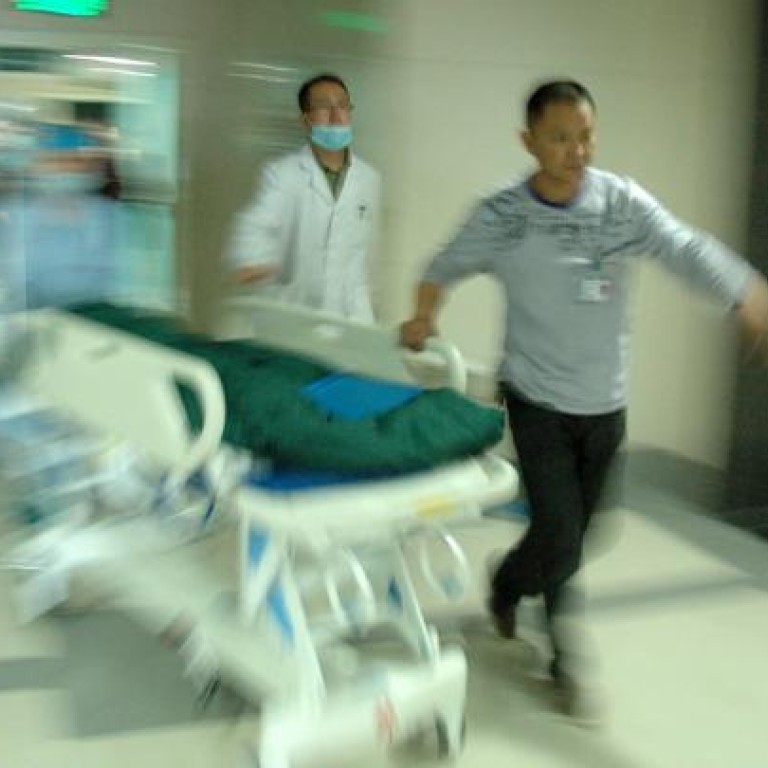
Fudan University's top hospitals list blamed for worsening bed crunch
Experts say annual effort to single out best facilities, while well intentioned, is making overcrowding worse
Shanghai's Fudan University has released a list of the mainland's top 100 hospitals, but instead of encouraging hospitals to do better, it has been criticised for encouraging patients to go to the already overcrowded elite institutions.

All the hospitals listed in the "Top 100 Comprehensive Hospital Ranking" released by Fudan's Hospital Management Institute on Sunday are government-funded.
The Fudan institute is one of the few compiling such rankings on the mainland. Gao Jiechun , who is in charge of the project, said it allowed top hospitals to know their exact position in comparison with other Class-A hospitals and gave the public a guide to the best hospitals and specialist departments, the reported.
The rankings garnered plenty of coverage in the media, leading microbloggers to say they would save the list and use it as a reference if they ever needed to go to hospital.
Despite its good intentions, analysts said the Fudan ranking had actually backfired.
Bao Yong , a public health professor from Shanghai Jiao Tong University, said the recent hospital rankings would help direct more people into those already crowded facilities, which ran counter to the goal of health reform. The authorities want the bulk of patients, especially those with chronic diseases, to attend class-B or class-C hospitals, with class-A ones left to deal with rare or difficult medical problems.
It's a big headache for the health sector because class-A hospitals, which have more than 500 beds and are also engaged in higher education and medical research, are too crowded. Beds for patients often overflow into the corridors.
The said the bed usage rate in class-A hospitals was 102.9 per cent, compared with 87 per cent in class-B hospitals, which have 101 to 500 beds and serve several communities.
Meanwhile, 56 per cent of the beds were used in class-C, or community, hospitals with less than 100 beds.
Bao said strengthening grass-roots health centres was important because there was a growing number of cases of chronic disease as society ages.
"Perhaps the top 100 big hospitals list should be scrapped; instead it's a good idea to have a list of community hospitals offering the best service, with patients' assessments taken into consideration," Bao said.
Public health experts warned years ago that some Beijing residents were queuing up for several hours at Peking Union Medical College Hospital just to seek treatment for a cold.
The excessive flow of patients has increased workloads for doctors and nurses, forcing them to spend little time listening to or caring for each patient.
As a result, members of the public have been complaining about hasty diagnoses by arrogant doctors, increasing the risk of medical accidents and conflicts between hospitals and patients.
However, the government's push to divert patients to grass-roots or community hospitals has made little progress because the public still lacks confidence in them due to insufficient funding and staffing.
The way the list was compiled also drew criticism. One criterion, the number of research papers published in top international journals, would steer hospitals away from treating patients but result in more support from the government and better promotion prospects for doctors.
Fudan University also released another ranking of 28 main hospital departments, listing the top 10 in each category.
Researchers compiling the lists said they were based on assessments by more than 1,300 senior doctors across the country who specialised in various fields, as well as the quantity and influence of research papers. The opinions of patients were not a factor.
That probably explains why three hospitals with strong records of scientific research have been ranked in the top three for the three years that the rankings have come out. They are Beijing's Peking Union Medical College Hospital, Chengdu's West China Hospital and the Chinese PLA General Hospital in Beijing, also known as the 301 Hospital.

